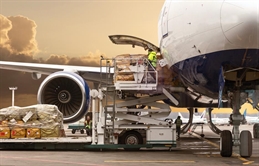
Aviation recovery in the Asia Pacific continues but the on-and-off Covid-related curbs in China continue to hamper recovery in the region, according to Airports Council International (ACI).
In a statement, ACI Asia-Pacific said as travel restrictions are lifted, the post-COVID traffic recovery continues to benefit from pent-up demand, but the ongoing conflict in Ukraine, high fuel prices, rising inflationary pressures, lower economic growth expectations, and the looming recession are casting a shadow on the overall recovery of the industry.
The latest countries to ease COVID restrictions were Japan, Hong Kong, South Korea and Chinese Taipei.
The continued quarantine requirements, however, in some countries within Emerging and Developed East Asia has slowed down the overall recovery in the region, it added.
“The consistent improvement in passenger volumes in the region is a positive indication of a sustained recovery of the industry following prolonged efforts towards rebuilding passenger confidence in air travel. Restoring international connectivity will take longer and will be partly dependent on the decision of China to re-connect to the World,” said Stefano Baronci, Director General, ACI Asia-Pacific.
“The macro-economic headwinds, less acute in Asia than other western regions, should not hamper a process of growth, subject to continue to maintain the freedom to travel without restrictions. All the stakeholders engaged in the aviation ecosystem must prepare to the surge in traffic,” Baronci added.
In the region, ACI said the domestic scheduled capacity has seen a remarkable recovery and is just -1.5% short of 2019 levels.
The international capacity is 51% below 2019 level and has shown of improvement of 8% over Q2 2022.
“Despite all the positive indicators, ACI forecast indicates Asia-Pacific to lose its dominating market share for the year 2022 and finish second with 1.84 billion passengers, a decline of -45% compared to 2019,” the report said, adding that the last time Asia-Pacific recorded a comparable level of traffic was in 2012 (1.84 billion passengers).
“This comes as a significant shock to our region that has dominated the civil aviation market since 2011, surpassing Europe and North America to maintain its stronghold until 2021,” ACI added, noting that load factors for both domestic and international passenger remain below pre-pandemic levels across Asia-Pacific and the Middle East sub- regions.
Airports still operating at a loss
“Despite traffic recovery, airports in the Asia-Pacific region are still operating at a loss, but will require to boost revenue sources to finance long-term CAPEX plans,” ACI said.
The total airport revenue was approximately 59% lower in the second quarter of 2022 than it was in the same period in 2019, a gradual increase is observed when compared to 2020 and 2021.
Total operating expenditures were -11.5 % lower in Q2 2022 vs Q2 2019, which ACI said meant that airport operators are making an effort to strike a balance between increasing total revenue and maintaining or reducing expenditure.
ACI noted that China’s persisting Covid restrictions are “hampering” the general recovery of the aviation industry in the Asia Pacific.
It added that China’s ZERO-COVID strategy that prohibits outbound and inbound travel has “overshadowed the region's overall positive trend.”
“The recovery of air transport in Asia-Pacific is lagging behind as compared to other regions, mainly due to prolonged administrative restrictions, despite strong economic, social and demographic fundamentals,” Baronci said.
“Altogether, Asia-Pacific and Middle East airports are handling less than half of what they did before. With such dramatic drop in passenger traffic volumes, the economic and financial health of our airports are impaired. Pandemic-induced travel curbs in China and its zero-COVID strategy, continue to hamper recovery in Asia-Pacific,” he added.
Air cargo dragged by headwinds
Following consistent growth in freight, ACI said cargo demand has witnessed a decline of -1.9% in the second quarter of 2022 owing to global macro headwinds and curbs in China.
On the contrary, the gradual increase in passenger load factors has provided a boost for cargo by adding more capacity in the form of belly hold.
Meanwhile, ACI noted that an investment of US$2.4 trillion is needed for Asia-Pacific and the Middle East airports until 2040 to accommodate expected growth in air passenger demand.
In its statement, it said that global air passenger demand is expected to grow over two-fold over the next 20 years, from 9.2 billion passengers in 2019 to about 19 billion in 2040.
“Interestingly, Asia-Pacific and the Middle East alone account for 58% of the global volumes, increasing at an average rate of 4.5% per annum vs 2.8% for other regions,” ACI said.
“This necessitates an investment totalling US$2.4 trillion or Asia-Pacific and the Middle East airports until 2040 to accommodate this growth,” it added, noting that Asia-Pacific accounts for 54% amounting to US1.3 trillion and the Middle East requires 6% amounting to US$151 billion.
“Failure to invest in airport capacity comes at a significant cost. For each 1 million annual passengers foregone due to lack of airport capacity in 2040, an average of 10,500 jobs are lost and annual GDP is US$346 million lower,” it said.



